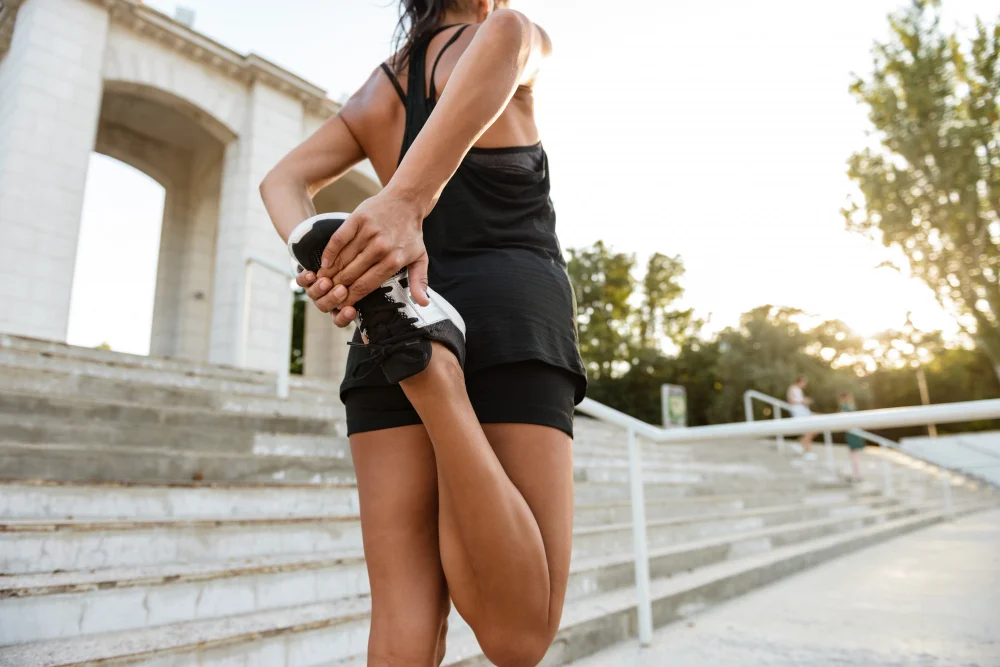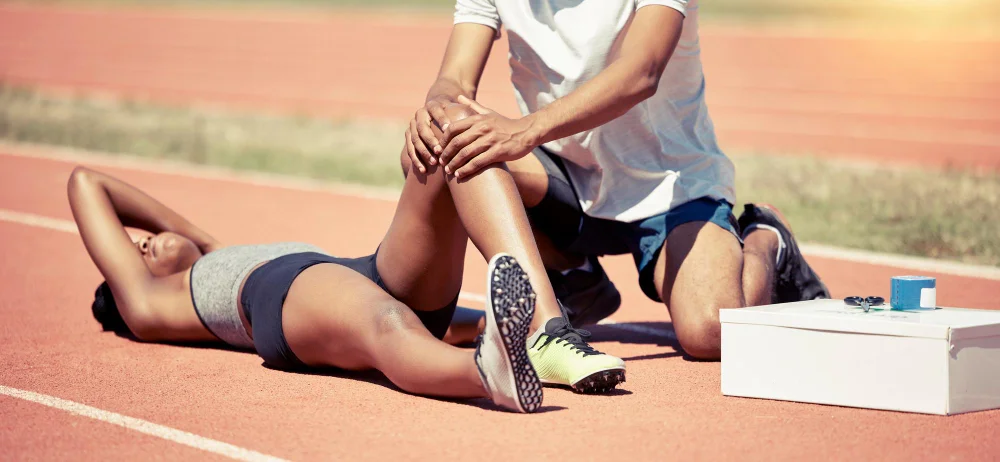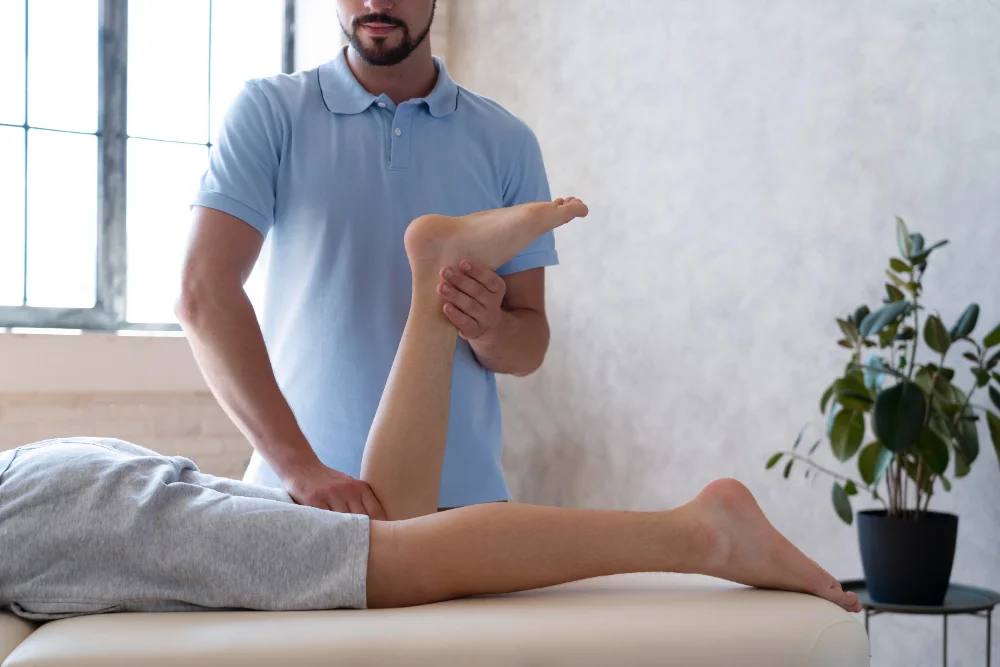Many runners overlook the benefits of massage therapy, yet it can significantly enhance your performance and aid in recovery. This guide will explore the various types of massage treatments, highlight their specific benefits for your body, and provide tips on how to incorporate them into your routine. Whether you’re a seasoned marathoner or a casual jogger, understanding how massage therapy can support your running goals will help you stay injury-free and boost your overall well-being.
Types of Massage Therapy for Runners

The right type of massage therapy can significantly enhance your performance and recovery as a runner. Each technique offers unique benefits tailored to your specific needs:
| Massage Type | Benefits |
| Swedish Massage | Relaxation and improved circulation |
| Deep Tissue Massage | Relieves chronic muscle tension |
| Sports Massage | Enhances flexibility and reduces injuries |
| Trigger Point Therapy | Targets specific muscle knots |
After exploring these types, you can select the right one to fit your running regimen.
Swedish Massage
While Swedish massage is known for its gentle strokes, it primarily focuses on relaxation and enhancing blood flow. This approach can help release tension and promote mental wellness, aiding your overall recovery.
Deep Tissue Massage
To address deeper muscle layers, deep tissue massage utilizes slow, firm pressure to alleviate chronic pain and muscle tightness. This technique effectively breaks down adhesions or scar tissue, which can impede your performance as a runner.
Therapy through deep tissue massage often provides significant relief for runners suffering from muscle soreness and fatigue. By targeting specific areas of discomfort, this technique promotes healing and enhances flexibility, ultimately improving your running efficiency.
Sports Massage
If you’re preparing for an event or recovering from one, sports massage is tailored specifically to the needs of athletes like you. Sports massage incorporates a variety of methods to enhance your performance and minimize the risk of injury.
A deep focus on the muscles used in running makes sports massage invaluable for both pre-race preparation and post-run recovery. It facilitates better circulation and can drastically improve your range of motion, ensuring that you stay at the top of your game.
Trigger Point Therapy
Some runners may face persistent muscle tightness that can lead to pain and discomfort; trigger point therapy is designed to address these issues effectively. By targeting specific knots or trigger points, this technique helps alleviate pain and restore muscle function.
With the right application, trigger point therapy can relieve tension buildup in the muscles that power your runs. This targeted approach ensures that you can maintain peak performance while decreasing recovery times, keeping you on the track and off the sidelines.
Benefits of Massage Therapy for Runners

While many runners focus on training and nutrition, incorporating massage therapy into your routine can significantly enhance your overall performance. Massage therapy offers a variety of benefits, such as improved circulation, reduced muscle soreness, and increased flexibility, all of which are necessary for maintaining optimal running form and stamina. By prioritizing massage, you can not only improve your running experience but also help your body stay healthy and injury-free.
Injury Prevention
Therapy plays a vital role in preventing injuries by addressing muscle tightness and imbalances before they escalate. Regular massage can help identify and alleviate any problematic areas, keeping your muscles and joints functioning optimally. By incorporating massage into your routine, you reduce the risk of strains or overuse injuries that could hinder your running journey.
Recovery Enhancement
The application of massage therapy can substantially enhance your recovery process after long runs or intense training sessions. By promoting muscle relaxation and reducing soreness, therapy can shorten your recovery time, allowing you to get back on the road more quickly.
Benefits of massage extend beyond temporary relief; they promote long-term recovery by encouraging blood flow, which delivers necessary nutrients and oxygen to tired muscles. This improved circulation accelerates the removal of metabolic waste, contributing to faster healing and better overall muscle function. As a result, you can enjoy higher energy levels and maintain a consistent training schedule.
Improved Performance
Some runners find that regular massage contributes significantly to improved performance. By enhancing flexibility and range of motion, therapy can help optimize your biomechanics and efficiency while running, giving you an edge during training and competition.
A well-rounded massage routine not only reduces stress and anxiety but can also improve your mental clarity and focus. This holistic enhancement means you are better prepared physically and mentally for your runs, ultimately allowing you to push your limits and achieve your personal bests with greater ease.
Tips for Choosing the Right Massage Therapist

Unlike traditional spa experiences, choosing the right massage therapist in Edmonton for your running needs involves specific considerations. Here are some tips to help guide your decision:
- Verify their credentials and training.
- Look for experience in sports massage.
- Check reviews and recommendations from other runners.
- Ask about their approach and techniques.
Recognizing the importance of these factors will ensure you select a therapist who best suits your requirements.
Credentials and Experience
Some therapists boast a wealth of experience, but it’s necessary to check their credentials first. Look for certifications from respected organizations in massage therapy, as well as additional training in sports massage. A therapist with experience working with runners can tailor their techniques to enhance your performance and recovery.
Specialization in Sports Massage
Experience in sports massage is vital for optimal performance recovery. Your therapist should have specific training that prepares them to address running-related issues such as muscle tightness, fatigue, and injury prevention. By focusing on these areas, they can help maintain your flexibility and endurance.
Credentials that reflect their specialization can help you gauge their knowledge. A therapist with additional certifications in sports massage understands athletes’ anatomy and the demands placed on your body while running. This specialized insight prepares them to provide targeted techniques that can alleviate discomfort and enhance your recovery process.
Recommendations and Reviews
For the best results, seek recommendations and read reviews from fellow runners. Hearing firsthand experiences can guide you toward a therapist who has proven effective for others with similar needs. Online reviews can also shed light on their approach and the overall ambiance of their practice.
Specialization in sports massage is often highlighted in reviews, offering insights into the therapist’s effectiveness with runners. A pattern of positive feedback regarding recovery and treatment success can assure you that they are well-suited to assist you on your running journey.
Step-by-Step Guide to Preparing for a Massage
Once again, preparing for your massage can enhance your experience and benefits. Follow these steps to ensure you are ready and make the most out of your session.
| Preparation Steps | Description |
|---|---|
| Hydrate | Drink plenty of water before your appointment to keep your muscles hydrated. |
| Avoid Heavy Meals | Eat a light snack an hour before your massage to avoid discomfort. |
| Arrive Early | Get to your appointment a few minutes early to fill out any necessary paperwork. |
| Communicate | Discuss any specific areas of tension or pain with your therapist. |
Pre-Massage Considerations
Any previous injuries or areas of concern should be communicated to your massage therapist. This ensures they can tailor the session to address your specific needs and prevent any further strain while providing relief.
What to Expect During the Session
Before your massage, be prepared for an individualized approach during your massage therapy. Your therapist may use various techniques such as deep tissue or sports massage, depending on your needs. Feel free to express any discomfort or adjustments in pressure during the session.
Guide your massage experience by setting clear expectations with your therapist. They may begin with a brief discussion of your goals and proceed to assess your body mechanics. You can expect a combination of techniques that may include stretching, kneading, and targeted pressure. Relax and breathe deeply, allowing yourself to disconnect from distractions.
Post-Massage Care
Some important considerations after your massage include staying hydrated and taking it easy for the rest of the day. Allow your body to absorb the benefits of the treatment without straining yourself immediately afterward.
Care for your body by maintaining hydration and incorporating gentle stretches post-session. This can aid in muscle recovery and enhance the effects of the massage. Consider scheduling regular massages as part of your training regimen to promote long-term wellness and performance improvement.
Factors to Consider Before Getting a Massage
Keep in mind the crucial factors before scheduling your massage therapy. Consider the following:
- Your specific needs and goals
- The type of massage suitable for you
- The therapist’s qualifications and experience
- Your existing injuries or conditions
- Your comfort level with the massage environment
Assume that a proper understanding of these factors will help you maximize the benefits of Massage for Runners.
Frequency of Massage
Assuming you actively engage in running, determining the optimal frequency of massage is vital for recovery and performance enhancement.
Timing Relative to Training
Relative to your training schedule, the timing of your massage can significantly influence its effectiveness.
This includes addressing post-run soreness, optimizing recovery periods, and setting yourself up for peak performance during training sessions. It’s beneficial to schedule massages after intense workouts rather than just before, as this can help alleviate muscle tightness without impacting your run.
Personal Medical History
You should always consider your personal medical history before undergoing any massage therapy.
Massage can be beneficial, but certain medical conditions can complicate or contraindicate treatment. Informing your therapist about past injuries, surgeries, or ongoing health issues ensures a safe and tailored approach to your massage, allowing for better results in enhancing your running regime.
Pros and Cons of Massage Therapy for Runners
Despite the numerous benefits massage therapy can provide, it’s imperative to weigh the pros and cons that may affect your routine as a runner. This therapy can enhance your performance but may come with certain drawbacks. The following table outlines some key advantages and potential downsides.
| Pros | Cons |
|---|---|
| Improves flexibility | May cause temporary soreness |
| Enhances circulation | Time-consuming |
| Reduces muscle tension | Costly for regular sessions |
| Promotes faster recovery | Requires finding a skilled therapist |
| Alleviates injury risk | Not suitable for certain injuries |
| Improves overall well-being | Potential for allergic reactions to oils |
| Boosts mental relaxation | May not provide immediate results |
| Provides personalized care | Inconsistent experiences with different therapists |
Advantages of Regular Massage
Regular massage can greatly benefit your running performance by improving flexibility, enhancing circulation, and reducing muscle tension. By incorporating massage into your routine, you can not only accelerate recovery after intense workouts but also minimize the risk of injuries. This practice fosters a better connection between your mind and body, allowing for improved mental clarity while you run.
Potential Drawbacks
Pros of massage therapy exist, but it’s also vital to consider the potential drawbacks. You may experience temporary soreness after a session, which can disrupt your training schedule. Massage can be time-consuming, requiring you to allocate a significant portion of your day. Additionally, regular sessions can be financially demanding and may limit your options if you can’t find a skilled therapist who understands the unique needs of runners.
Massage therapy can also pose risks such as aggravating certain injuries or causing allergic reactions to any oils or products used during the session. Moreover, not every massage experience will yield immediate results, and varying therapist skills can lead to inconsistent outcomes. Weighing these factors will help you make an informed decision about integrating massage into your routine as a runner.
Massage Therapy For Runners Conclusion
Ultimately, understanding the benefits of massage therapy can enhance your running performance and recovery. By incorporating different techniques into your routine, you can alleviate muscle tension, improve flexibility, and reduce the risk of injury. Prioritizing massage not only helps you feel better physically but also enhances your overall athletic experience. As you explore these methods, you equip yourself with valuable tools to support your journey as a runner, ensuring you remain at your best with every stride.
Massage Therapy For Runners FAQs
Q: How can massage therapy benefit runners specifically?
A: Massage therapy offers various benefits for runners, including improved circulation, reduced muscle tension, and enhanced flexibility. By addressing tightness and soreness, massages can help runners recover faster from workouts and races, allowing them to train more effectively. Additionally, massage can aid in injury prevention by identifying and treating problem areas before they develop into more significant issues.
Q: What types of massage are most effective for runners?
A: Several types of massage can be particularly beneficial for runners. Sports massage focuses on specific muscle groups used during running, helping to alleviate tension and soreness. Deep tissue massage targets deeper layers of muscle and connective tissue to address more persistent tightness. Other techniques, like trigger point therapy, can effectively release specific knots in the muscle. Ultimately, the best type of massage may vary depending on individual needs and preferences, so it’s important for runners to communicate their concerns to their massage therapist.
Q: How often should runners receive massage therapy?
A: The frequency of massage therapy for runners can vary based on their training schedule and individual needs. Many runners find that getting a massage once every two to four weeks is beneficial for maintenance, especially during peak training periods. However, during intense training or after a race, more frequent sessions (weekly or bi-weekly) may be advantageous to aid in recovery and prevent injuries. Listening to your body and consulting with a massage therapist can help determine the optimal schedule for your needs.
